Wednesday, November 2, 2005
When the world was young, the clouds of mosquitoes drifting over from the drainage ditches and rice fields made it very difficult to enjoy the comparatively mild evenings outdoors in the Spring and Fall. Our neighbors built a recreational screened in patio behind their home and used it to great effect. My mother always wanted one and my father started a somewhat more elaborate one with multiple sliding glass doors and ceiling fans. However, he only partially completed it before his stroke and, as with pretty much every other space in their house, it became primarily a storage area for plants and gardening tools.
Wednesday was the day for cleaning up the patio, although disputes arose with my mother on my desire to basically put everything on the curb rather than have to pack and haul a lot of dirty stuff around to a new home. Ultimately, I was able to get most of it disposed of, although she insisted on moving a number of heavy, dirty and fragile clay pots.
Wednesday was also the day for a visit from a Realtor regarding sale of the house. Joan Johnson was an agent from Flavin Realty recommended by a neighbor. She looked over the house and made numerous observations and positive recommendations for the reconstruction:
- It was a seller's market before hurricane and although no one was certain what would happen after the hurricane, the speculation was that with numerous people both from the area and from Cameron (which was almost completely wiped off the map) will be looking for new houses.
- When she researched the neighborhood, she found it to be extremely stable. Only one house had been sold in the last three years.
- As with many people who saw the house, she really liked the brick
- She suspected that the mold we were seeing on the walls was not the toxic black mold that can cause death and sends lawyers into a tizzy. But without further confirmation, it was better to be misled than dead.
- Paneling and wallpaper are no longer fashionable. They also covered the walls of a large portion of the house. Although many of the walls now needed to be gutted to remove the mold, mom really liked the paneling and thought, perhaps, a potential buyer might have similar tastes to hers and would not be concerned with trends in interior design. I disagreed, but it's her house.
- We had become so used to the rice field next door that we never really thought much about it. However, it does introduce some unknowns both as an area for future (undesirable) development and for the absence of protection from strong storm winds that could come sweeping down the plain unabated by other buildings.
- Lowered kitchen ceilings were a strange period feature of early '70s houses. Mom loved hers and they do give the kitchen a more intimate feeling. But some might call it claustrophobic, and she consented to having our contractor raise the ceiling during reconstruction.
- Ultimately, the mantra in selling an old home is "Don't do more than you need - you may not get money back." It's a nasty balancing act because if you don't do enough you might have a harder time selling and/or be unable to get the price you want.
- Beige or taupe paint is preferred over white for walls.
- Laminate floors are cool, but expensive.
- The marketable square footage only includes the heated area, not the garage or patio.
Interestingly, she pointed out that the biggest drawback to the area was the quality of the schools (Fairview / F.K. White / Lagrange), since the more attractive growth areas are on the Southwest side of town. In the polarized climate of suburbia, this may also have been code for race as our side of town was and is much more integrated than the more affluent areas.
Ms. Johnson later passed on to me the name of an Environmental Inspector (who is a member of Industrial Hygiene Association and has a CRMI Certification) who could come into our house during renovation and give us some indication of the level of remaining mold in the house. He would come in after the demolition and chlorine treatment but before reconstruction to take two indoor samples, one outdoor sample, maybe one surface sample. After the results were processed in a lab, the resulting 30-page report would, basically, indicate whether mold was in one of three level categories: background, above background, or way above background. While he could not guarantee the absence of mold (which is impossible since there is mold everywhere), his job was to provide quality assurance...and give the new buyer some indication that the cleanup was done right.
Right around the time the Realtor arrived, I got a call from the Allstate adjuster. The initial assessment of our damage was quite generous and above the initial estimated cost of the repairs. Financially, at least, the folks might actually end up a bit ahead of where they were before the storm.
For a number of years, my mother had mentioned Ruston as a place she might like to relocate. Although I had always hoped she would move back to Missouri to be closer to her remaining family, she insisted that the limitations of my father's state health plan necessitated staying in Louisiana. On their frequent trips to Missouri, they always passed trough Ruston and she always though it looked like a nice place to live. Now was the chance to explore that possibility.
Supposedly, FEMA would be hauling away damaged materials if placed on the curb. The stuff was starting to create a truly fearsome pile and I was growing concerned about what would happen if FEMA never showed up.
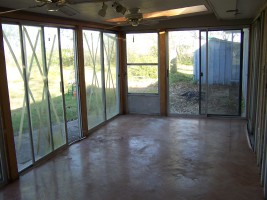
Patio
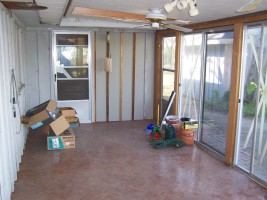
Patio
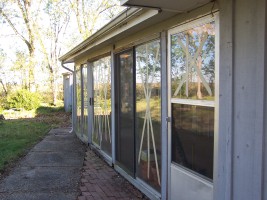
Patio

The pile
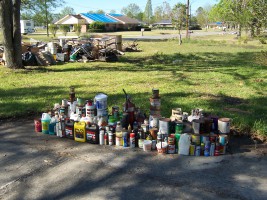
The pile
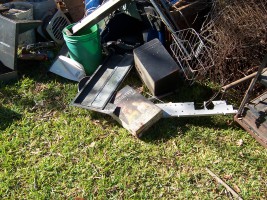
The pile
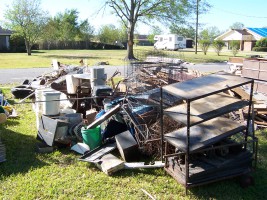
The pile

The pile
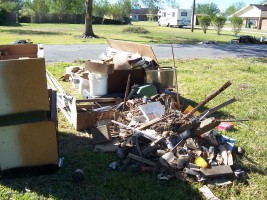
The pile

The pile

The pile

The pile
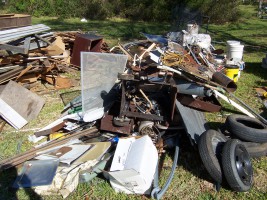
The pile
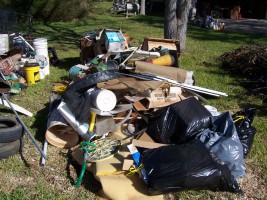
The pile
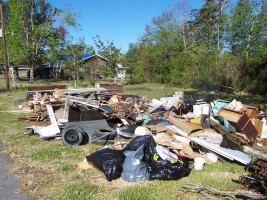
The pile
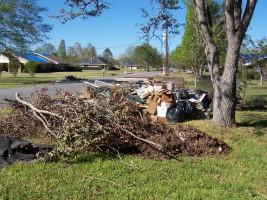
The pile

The pile
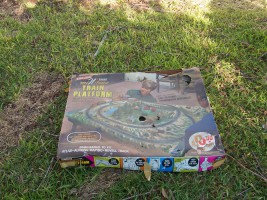
Where the train obsession started
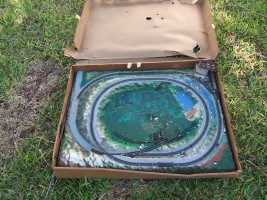
Where the train obsession started